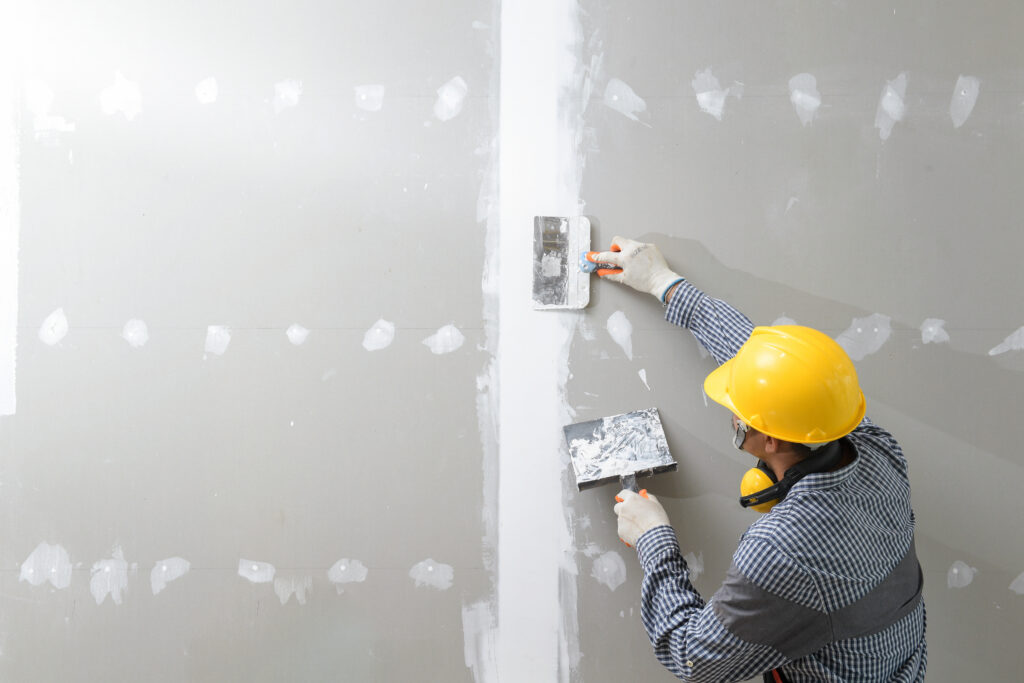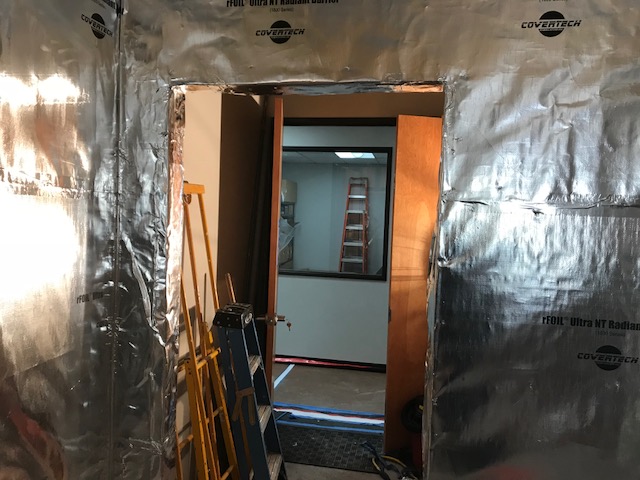As RF requirements for SCIFs become standard, what does it take to add protection?
The Defense Intelligence Agency (DIA) issued and quickly rescinded a memo late last year that all future SCIFs would be required to have approved Radio Frequency (RF) shielding. However, they recommended that all future SCIFs consider RF shielding for any new SCIF construction as a “future cost-saving measure.” In July 2023, the Navy released a message that they will have a similar requirement for all SCIFs supporting a naval program, where an approved RF shielding product will be required on all perimeter surfaces of new SCIFs, SCIFs receiving renovations, or collateral facilities under consideration for conversion to a SCIF.

For SCIFs that need to undergo other renovations, this change will greatly affect the timeline and budget for their renovations, as even the simplest version of adding RF shielding to an existing facility is a very involved process.
What Does This Change Mean?
Based on the phrasing of the message from the Navy, at this time the expectation is not that facilities will meet a certain performance standard for RF shielding. It only specifies “the installation of an approved RF shielding product on all SCIF perimeter surfaces (walls, floors, ceilings, windows and doors).” Based on this, the requirement will be that RF foil will be required in all SCIF construction for the Navy.
However, this will ultimately be up to the accrediting team and in particular the Certified TEMPEST Technical Authority (CTTA). They may interpret the standard differently and require your facility be able to shield against a certain range of frequencies. If you’re doing a renovation of an existing facility or upgrading a facility like a Closed Area into a SCIF, the CTTA may reevaluate the risk your facility faces and decide that you need to meet a higher standard than what the Navy message lays out.
There’s a high chance a similar requirement will extend to all agencies in the future based on the DIA memo, but at this time there is no official standard.
How Do You Add RF Shielding in a Renovation?
Even if the CTTA doesn’t require you to meet a Shielding Effectiveness (SE) performance level, just adding foil to the walls is an extensive project that you need to consider when making your budget and timeline for the renovation.

RF Foil on walls
To begin, you need to remove anything on the walls, such as data ports or power outlets, and patch the wall up. The flooring and acoustic ceiling will also need to be removed, along with anything above the acoustic ceiling, such as ventilation or lighting. Once this is done, the foil can be added to all the surfaces, running from true floor to true ceiling on the walls. After the foil is added, drywall will be added to the walls as well as floorboards. You can then finish the walls and add back what you had to remove at the start of construction. Windows can have RF shielding film added to them.
Doors are a trickier addition. There are paint products on the market that provide an RF barrier that you can add, but signals would still be able to leak out around the door leaf and jamb. The paint also isn’t as effective at shielding as the foil. To stop the leaks, you would need to add RF gaskets to the door and an RF-rated drop bottom. These solutions aren’t guaranteed to work effectively, and the only guaranteed solution is an RF-rated door assembly.
The extent of this renovation will vary greatly on a case-by-case basis, as will the price and time it takes to complete it. It will require a variety of workers, including electricians, drywallers, painters, members of the data and comm team, and more. For this type of renovation, whatever parts of the SCIF are currently being worked on will have to be closed, so you need to account for that if you have a program still operating in the space.
If the CTTA requires you to meet a performance requirement, this will become an even more elaborate process. You will likely need to add protections like waveguides to penetrations such as pipes or vents. There is currently no product on the market that can be added to a perimeter door that will fully prevent emanations from leaking out of the facility. Because of this, if you need to meet a shielding performance requirement, you must fully replace the perimeter door with an RF-rated assembly.
Again, all that is explicitly required by the Navy message is the RF-shielding foil, but the CTTA and Accrediting Official (AO) will have the final word and may have their own interpretation of what the requirement is. It’s likely that before long RF shielding will be standard for SCIFs across all agencies to some degree.
Ever-changing government standards can be overwhelming and confusing, but Adamo’s got your back. Whether you need testing to see if your facility is meeting RF standards or a partner to help guide you through construction, you can trust us to make sure things are done right the first time.




